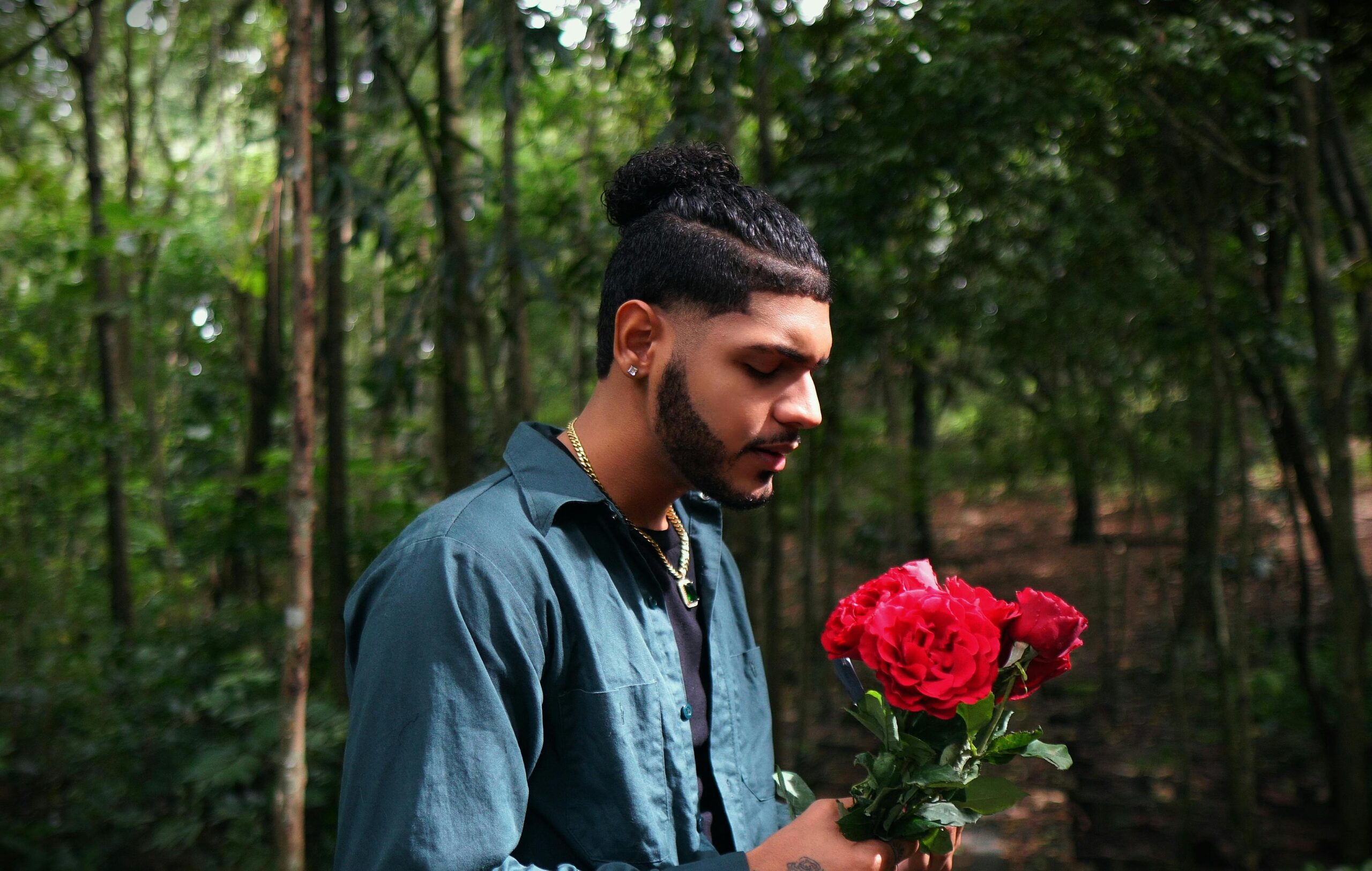Nature whispers ancient truths to those willing to listen. Ecological balance isn’t merely science—it’s a spiritual law woven into the fabric of existence itself.
Throughout human history, indigenous cultures and spiritual traditions have recognized what modern science is only beginning to rediscover: the intricate web of relationships that sustains all life operates according to principles that transcend the material world. This harmony in nature reflects universal laws that govern not just ecosystems, but consciousness, energy, and spiritual evolution.
When we observe a thriving forest, a coral reef teeming with life, or a perfectly balanced predator-prey relationship, we’re witnessing more than biological processes. We’re observing the manifestation of cosmic intelligence—a divine orchestration that maintains equilibrium through invisible forces of cooperation, interdependence, and cyclic regeneration.
🌿 The Sacred Geometry of Ecosystems
Ecological systems organize themselves according to mathematical patterns found throughout the universe. The Fibonacci sequence appears in pinecones, sunflowers, and spiral galaxies alike. This isn’t coincidence—it’s evidence of a fundamental ordering principle that operates across all scales of existence.
When an ecosystem maintains balance, energy flows efficiently through trophic levels, nutrients cycle without waste, and diversity ensures resilience. This mirrors spiritual principles found in ancient wisdom traditions: the concept of prana or chi flowing through meridians, the balance of giving and receiving, and the interconnectedness of all beings.
Modern ecology has discovered what mystics have always known: nothing exists in isolation. Every organism participates in countless relationships, each one essential to the whole. Remove one species, and the ripple effects cascade through the entire system. This is the ecological equivalent of spiritual teachings about unity consciousness and the illusion of separation.
The Wisdom of Natural Succession
Forest succession demonstrates nature’s inherent intelligence. After a disturbance, pioneer species colonize bare ground, creating conditions for more complex communities. Each stage prepares the way for the next, until a climax community emerges in dynamic equilibrium with its environment.
This process mirrors spiritual growth. We begin as “pioneer species” in our consciousness journey—simple, resilient, able to thrive in harsh conditions. As we develop, we create internal conditions that allow more sophisticated awareness to take root. Eventually, we reach states of maturity where wisdom, compassion, and inner peace become self-sustaining.
⚖️ Balance as a Cosmic Principle
The concept of balance permeates spiritual traditions worldwide. Taoism speaks of yin and yang, Hinduism of the three gunas, Buddhism of the middle way. These aren’t abstract philosophies—they’re observations of how reality operates, reflected perfectly in ecological systems.
Predator-prey dynamics maintain population equilibrium through feedback loops that prevent any single species from overwhelming the system. When wolves were reintroduced to Yellowstone National Park, they didn’t just control elk populations—they transformed the entire ecosystem, allowing vegetation to recover, which stabilized riverbanks, created habitat for numerous species, and even changed the physical geography of the park.
This phenomenon, called a trophic cascade, reveals how balance at one level creates harmony throughout the entire system. Spiritually, this teaches us that addressing root causes of imbalance in consciousness—our “apex predators” of fear, attachment, or ego—can transform our entire inner landscape.
The Law of Reciprocity in Action
Nature operates on gift economies. Bees receive nectar while pollinating flowers. Fungi provide nutrients to tree roots while receiving sugars in return. Decomposers break down dead matter, releasing nutrients for new growth. Every participant both gives and receives in continuous exchange.
This reciprocity isn’t transactional—it’s transformational. Each exchange creates more than the sum of its parts. A tree doesn’t calculate the exact return on its investment in mycorrhizal fungi; it participates in a relationship that benefits the entire forest community, including itself.
Spiritually, this reflects universal principles of abundance, generosity, and the multiplication that occurs when we align with natural law rather than resisting it. Hoarding resources—whether material wealth or emotional energy—creates stagnation. Circulation creates vitality.
🦋 Biodiversity as Spiritual Wealth
Ecologists measure ecosystem health partly through biodiversity. Diverse systems are resilient, adaptable, and productive. Monocultures, by contrast, are vulnerable to disease, require intensive intervention, and deplete soil vitality.
The spiritual parallel is striking. Psychological monocultures—rigid belief systems, narrow perspectives, unexamined assumptions—create fragility. Diversity of thought, experience, and perspective generates resilience, creativity, and growth. Just as ecosystems thrive on genetic variation, consciousness evolves through encountering difference.
Indigenous wisdom keepers have long understood that every plant, animal, and element of landscape holds medicine—specific teachings and gifts. Losing species isn’t just about missing genetic code; it’s losing living libraries of wisdom, unique expressions of creative intelligence that can never be replicated.
Edge Effects and Creative Emergence
The most vibrant, productive areas in nature occur at edges—where forest meets meadow, land meets water, different ecosystems intersect. These ecotones contain species from both adjacent habitats plus unique species found nowhere else. Biodiversity concentrates at boundaries.
Spiritually, growth occurs at edges of our comfort zones, where familiar meets unfamiliar. Transformation happens in liminal spaces, between identities, during transitions. The creative tension of holding paradox—being simultaneously grounded and open, centered and expansive—generates new possibilities unavailable within homogeneous states.
🌊 Cycles, Rhythms, and the Dance of Time
Ecological balance operates through nested cycles: diurnal rhythms, lunar phases, seasonal changes, successional stages, ice ages. Each cycle contains smaller cycles, all synchronized in complex harmony. Plants photosynthesize daily while responding to seasonal light changes and multi-year climate patterns.
Ancient spiritual practices recognized these rhythms as pathways to alignment with cosmic order. Planting and harvesting festivals, seasonal ceremonies, daily practices timed to solar movement—these weren’t superstitions but technologies for synchronizing human consciousness with natural cycles.
Modern life increasingly disconnects us from these rhythms. Artificial light disrupts circadian cycles. Climate control separates us from seasons. Always-on technology ignores natural periods of activity and rest. The result? Widespread dysregulation—physical, emotional, and spiritual.
Death as Transformation, Not Ending
In nature, death isn’t opposite to life but integral to it. Fallen trees become nurse logs nurturing new growth. Salmon bodies feed forests through bears and birds. Autumn leaves mulch into spring soil. Energy and matter transform continuously, never destroyed, always cycling.
This reflects spiritual teachings about impermanence, rebirth, and the eternal nature of consciousness. What we call death is transition, transformation, rearrangement. Ecosystems that resist this process—where dead material accumulates without decomposition—become stagnant and disease-prone.
Similarly, spiritual health requires releasing what no longer serves, composting old identities, allowing parts of ourselves to die so new capacities can emerge. Clinging to what should naturally pass creates suffering and blocks evolutionary flow.
🔄 Resilience Through Adaptive Capacity
Healthy ecosystems don’t maintain static equilibrium—they exhibit dynamic stability, constantly adjusting to changing conditions while maintaining essential functions. This resilience emerges from redundancy, diversity, and modularity.
If one species fulfills a critical function, ecosystem collapse becomes possible if that species disappears. But when multiple species can perform similar roles, the system adapts. This functional redundancy creates insurance against disruption.
Spiritually, this suggests the wisdom of developing multiple resources for wellbeing: various practices, diverse relationships, different sources of meaning. Depending on a single spiritual teacher, practice, or belief system creates vulnerability. Diversified spiritual portfolios generate resilience.
Keystone Species and Transformative Presence
Some species exert influence far beyond their numbers. Remove them, and entire ecosystems collapse. Sea otters, prairie dogs, and fig trees all serve as keystones—their presence maintains conditions that allow countless other species to thrive.
Certain individuals similarly serve as keystones in human communities and consciousness evolution. Not necessarily the most visible or numerous, they catalyze disproportionate positive change through their quality of presence, wisdom, or action. Spiritual teachers, community elders, and those who embody integrated consciousness often play this role.
The lesson isn’t to become a keystone yourself necessarily, but to recognize and support them. Ecosystems protect their keystones instinctively through evolved relationships. We might consciously choose to honor and sustain those whose presence elevates collective consciousness.
🌍 Fractals of Wholeness Across Scales
Ecological principles operate identically across vastly different scales. The same patterns governing cellular metabolism appear in planetary nutrient cycles. A single tree mirrors forest structure. This fractal quality suggests these aren’t arbitrary patterns but fundamental properties of self-organizing systems.
Spiritual traditions point to similar fractal nature of consciousness. The microcosm reflects the macrocosm. As above, so below. Finding inner peace contributes to world peace not metaphorically but literally—consciousness operates fractally, with individual and collective dimensions of the same unified field.
This understanding dissolves the false choice between personal transformation and collective action. They’re not separate paths but different scales of the same work. Healing yourself heals the world because you ARE the world, experiencing itself subjectively.
💫 Practical Applications of Ecological Spirituality
Understanding ecological balance as spiritual law isn’t merely philosophical—it offers practical guidance for daily life. How might we embody these principles?
- Practice reciprocity: Consciously engage in giving and receiving, ensuring both flow freely in your life.
- Embrace diversity: Seek perspectives different from yours; cultivate relationships across difference.
- Honor cycles: Align daily rhythms with natural light, respect seasons of activity and rest in your work.
- Allow decomposition: Regularly release what no longer serves—possessions, beliefs, relationships, identities.
- Develop resilience: Build multiple sources of wellbeing rather than depending on single strategies.
- Recognize interconnection: Consider how your choices ripple through social and ecological systems.
- Cultivate patience: Trust natural timing rather than forcing premature results.
Biomimicry for Consciousness
Biomimicry applies nature’s strategies to human design challenges. We might similarly apply ecological principles to consciousness development. How does nature solve problems we face psychologically and spiritually?
Nature achieves efficiency through collaboration more than competition. It optimizes for whole-system health rather than individual maximum. It uses waste as resource. It builds from the bottom up rather than top down. It rewards cooperation with survival advantage.
Applying these strategies to inner work suggests approaches like integrating shadow material rather than suppressing it, developing collaborative relationships between different aspects of self, and organizing spiritual practice around principles that serve whole-being flourishing rather than ego goals.
🌱 Restoring Balance in a Disrupted World
Human civilization has significantly disrupted ecological balance, creating cascading crises. Yet nature demonstrates remarkable regenerative capacity when given opportunity. Abandoned industrial sites become vibrant ecosystems within decades. Depleted soil rebuilds through appropriate management. Species rebound when habitats recover.
This offers hope for spiritual and social healing. No matter how far from balance we’ve strayed individually or collectively, the same principles that restore ecosystems can guide our return to wholeness. The work requires humility, patience, and alignment with natural law rather than resistance to it.
We can’t engineer our way to balance through clever manipulation. We must humble ourselves before nature’s wisdom, observing how life actually works rather than imposing how we think it should work. This represents a fundamentally spiritual stance—surrender to reality as it is, cooperation with forces larger than individual will.

🙏 Walking the Path of Harmony
Ecological balance as spiritual law invites us into deeper relationship with life itself. Not as separate observers or managers, but as conscious participants in an ongoing creative process billions of years in the making.
Every choice becomes an opportunity to align with natural principles or resist them. Every moment offers a chance to participate in the great balancing act that maintains conditions for life to flourish. This isn’t burdensome responsibility but joyful participation in something infinitely larger than our small separate selves.
The same intelligence that orchestrates forest succession, maintains atmospheric composition, and synchronizes migratory timing operates within us. We are not separate from nature trying to understand it; we are nature becoming conscious of itself.
When we unlock the power of ecological balance as spiritual law, we access timeless wisdom that predates human civilization and will continue long after. We join the ancient conversation between earth and sky, predator and prey, death and rebirth. We take our place in the sacred web, both contributing to and receiving from the magnificent harmony that sustains all existence.
This recognition transforms everything. Suddenly, a walk in the forest becomes spiritual practice. Tending a garden becomes meditation. Observing bird behavior becomes scripture study. The entire natural world reveals itself as living temple, every creature a teacher, every ecosystem a sermon on the fundamental laws governing all of reality.
The invitation stands open. Nature waits patiently, perpetually demonstrating principles of balance, resilience, and interconnection. Will we accept the teaching? Will we align our lives with these eternal laws? The choice, as always, remains ours—though the consequences of that choice ripple far beyond our individual existence, touching all beings in the vast ecological and spiritual web of which we are inseparable threads. 🌎
Toni Santos is an eco-spirituality researcher and planetary healing writer exploring how earth-based rituals, nature-centred philosophy and sacred ecology reconnect humanity with the living planet. Through his work on environment, consciousness and ritual, Toni examines how our relationship with Earth influences our awakening and actions. Passionate about land-wisdom, ritual practice and ecological integration, Toni focuses on how spiritual life can emerge from ecological awareness and how healing flows from land, water and community. His work highlights the union of ecology, mind and spirit — guiding readers toward a more grounded, relational, and sacred life. Blending ritual studies, environmental philosophy and ecological design, Toni writes about the human-earth story — helping readers understand how living systems, community and meaning intertwine in planetary healing. His work is a tribute to: The sacred connection between humanity and Earth’s living systems The power of ritual to rekindle land-memory and collective renewal The vision of ecology as sacred, relational and transformational Whether you are a ritual practitioner, ecological thinker or planet-healer, Toni Santos invites you to explore the path of planetary awakening — one ritual, one ecosystem, one transformation at a time.




